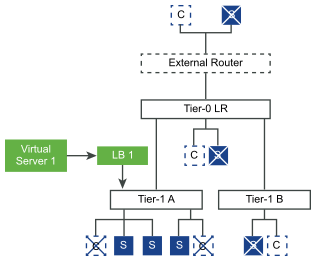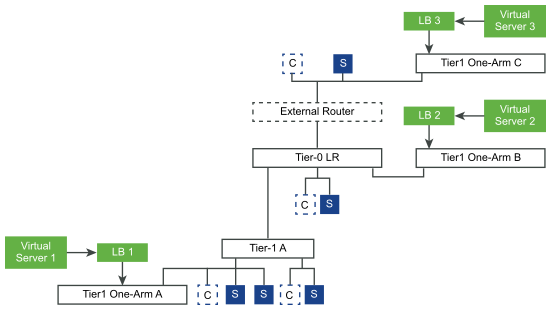Load balancers are typically deployed in either inline or one-arm mode. One-arm mode requires virtual server Source NAT (SNAT) configuration, and inline mode does not.
Inline Topology
In the inline mode, the load balancer is in the traffic path between the client and the server. Clients and servers should not be connected to overlay segments on the same tier-1 logical router if SNAT on the load balancer is not desired. If clients and servers are connected to overlay segments on the same tier-1 logical router, SNAT is required.

One-Arm Topology
In one-arm mode, the load balancer is not in the traffic path between the client and the server. In this mode, the client and the server can be anywhere. The load balancer performs Source NAT (SNAT) to force return traffic from the server destined to the client to go through the load balancer. This topology requires virtual server SNAT to be enabled.
When the load balancer receives the client traffic to the virtual IP address, the load balancer selects a server pool member and forwards the client traffic to it. In the one-arm mode, the load balancer replaces the client IP address with the load balancer IP address so that the server response is always sent to the load balancer. The load balancer forwards the response to the client.

Special Use Case When no overlay is used and everything is VLAN, overlay still must be configured on the edge nodes hosting the tier-1 one-arm load balancer. This is because edge nodes must have at least one tunnel end point UP for high availability between edge nodes. When the tunnels are UP they will agree on which edge node will run the active or standby role of each tier-0 and tier-1 gateway.
Tier-1 Service Chaining
- Ingress
DNAT - Firewall - Load Balancer
Note: If DNAT is configured with Firewall Bypass, firewall is skipped but not load balancer.
- Egress
Load Balancer - Firewall - SNAT